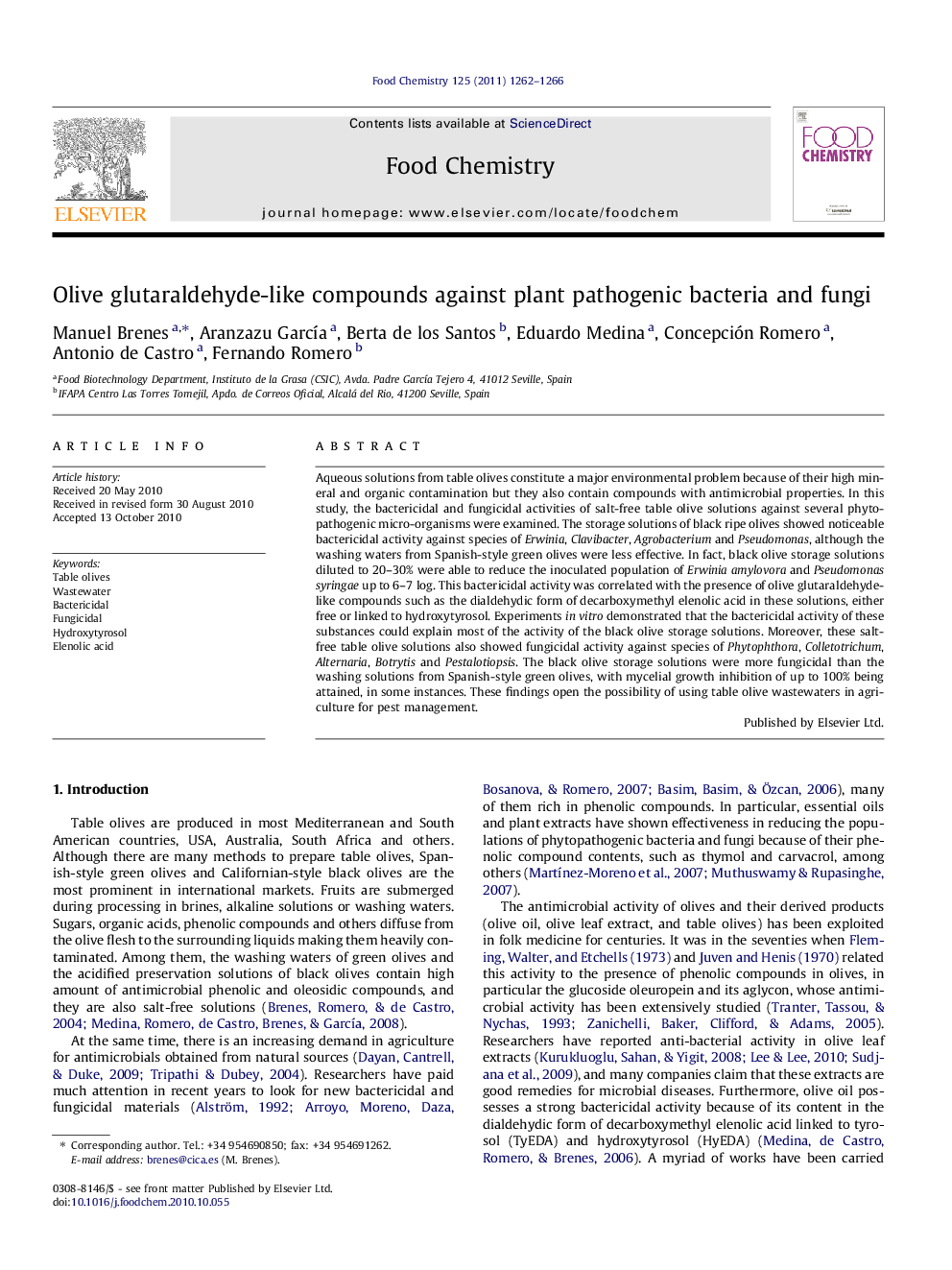| کد مقاله | کد نشریه | سال انتشار | مقاله انگلیسی | نسخه تمام متن |
|---|---|---|---|---|
| 1186480 | 963440 | 2011 | 5 صفحه PDF | دانلود رایگان |

Aqueous solutions from table olives constitute a major environmental problem because of their high mineral and organic contamination but they also contain compounds with antimicrobial properties. In this study, the bactericidal and fungicidal activities of salt-free table olive solutions against several phytopathogenic micro-organisms were examined. The storage solutions of black ripe olives showed noticeable bactericidal activity against species of Erwinia, Clavibacter, Agrobacterium and Pseudomonas, although the washing waters from Spanish-style green olives were less effective. In fact, black olive storage solutions diluted to 20–30% were able to reduce the inoculated population of Erwinia amylovora and Pseudomonas syringae up to 6–7 log. This bactericidal activity was correlated with the presence of olive glutaraldehyde-like compounds such as the dialdehydic form of decarboxymethyl elenolic acid in these solutions, either free or linked to hydroxytyrosol. Experiments in vitro demonstrated that the bactericidal activity of these substances could explain most of the activity of the black olive storage solutions. Moreover, these salt-free table olive solutions also showed fungicidal activity against species of Phytophthora, Colletotrichum, Alternaria, Botrytis and Pestalotiopsis. The black olive storage solutions were more fungicidal than the washing solutions from Spanish-style green olives, with mycelial growth inhibition of up to 100% being attained, in some instances. These findings open the possibility of using table olive wastewaters in agriculture for pest management.
Journal: Food Chemistry - Volume 125, Issue 4, 15 April 2011, Pages 1262–1266